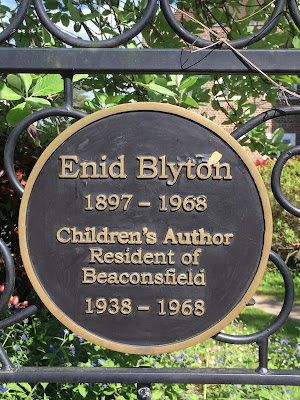The first part of our walk took us to through the Old Town to the cemetery in search for the grave of one of the Titans of early 20th century Catholic and Christian literature, Gilbert Keith Chesterton.
I tried to take close up of the inscription, not very successfully. I think if you zoom in it is just about legible.
Wikimedia (public domain)
Chesterton lived in Beaconsfield from 1909 until his death in 1936. He was received into the Catholic Church there (in a temporary building used before the existing Church was built) and buried in the Catholic section of the cemetery. His grave was easy to find, not far from the entrance.
I tried to take close up of the inscription, not very successfully. I think if you zoom in it is just about legible.
Two years after Chesterton's death the prolific children's author Enid Blyton moved to Beaconsfield, where she lived for nearly thirty years, although she died in a nursing home in Hampstead and was buried in North London. For nearly fifty years there was nothing to commemorate her in the town where she had lived for so long, but three years ago a memorial plaque was put up in front of Beaconsfield Town Hall.
Enid Blyton's books were once considered quite controversial. On the one hand, children loved them and many children who would not otherwise have bothered with books read them avidly; on the other hand, their simplistic style and limited vocabulary turned many teachers, librarians and parents against them, with some libraries refusing to stock the books. My mother fell into the latter category, so I missed out on the Secret Seven and Famous Five as a child, though I remember reading some of her school stories, probably while I was at school myself. For some reason Mum didn't object to the Noddy books, maybe because they were aimed at younger children. Noddy and Big Ears, the most instantly recognisable of her characters, were featured on the Beaconsfield memorial.
I wonder what Chesterton would have made of Noddy?



















